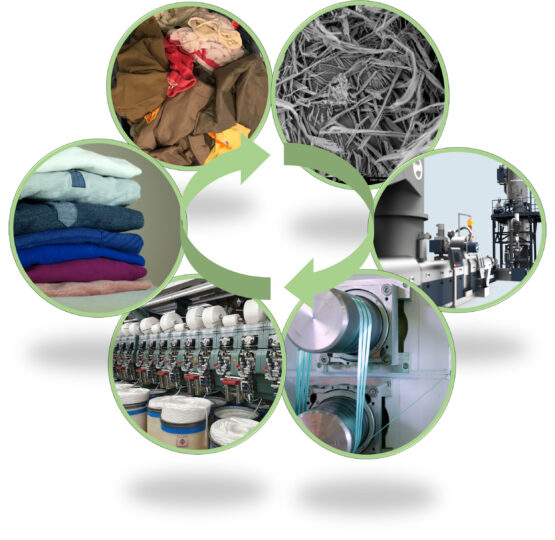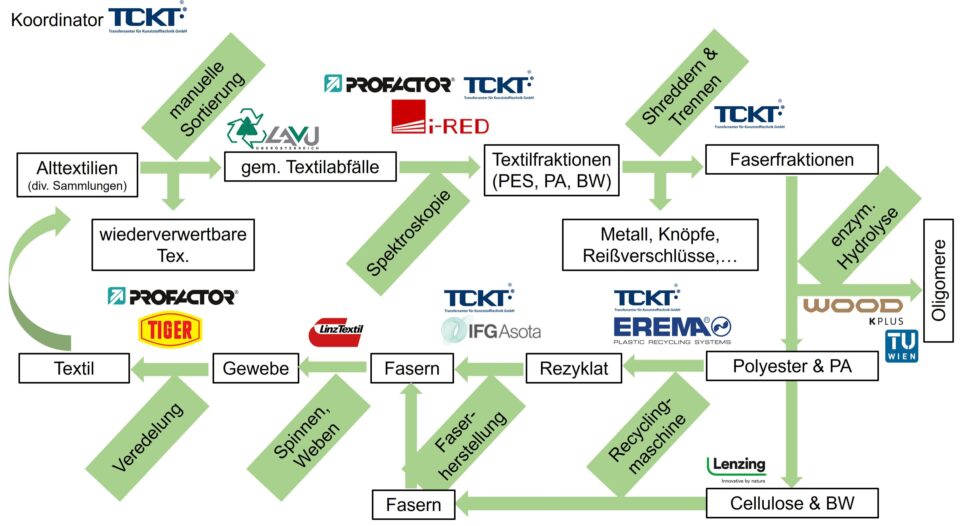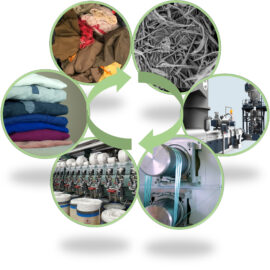In 2018, Austria generated almost 222 thousand tons of textile waste, of which only 23% (i.e. 51∙103 t) was collected sorted and 77% (171∙103 t) ended up in mixed waste. Used textiles in mixed municipal waste end up almost exclusively in thermal recovery. In total, only about 7% (approx. 15∙103 t) of the 222 thousand tons of textile waste is recycled and 10% (approx. 22∙103 t) is reused (UBA 2022). A significant increase in the recycling rate of used textiles should therefore be aimed for. Since most textiles consist of two or more fiber types, recycling is not efficiently possible with current technologies. Therefore, the aim of the project is to solve this problem and make it possible to recycle polymers from textiles. The core of this is enzymatic hydrolysis, which separates those components from a fiber mixture that are present in small proportions so that the remaining polymer can be made available as a raw material for the textile processing chain. Depending on the polymer, a recycling fiber can be produced in a melt or solvent spinning process, which can subsequently be processed into a yarn and finally into a textile (Fig. 1). This fiber-to-fiber recycling is in line with the idea of circular economy. This can reduce the consumption of resources as well as generate a new business field for the recycling industry. For the enzymatic separation to run efficiently, the textiles must first be automatically identified and sorted, which can generate fractions with high proportions of polyester or cellulose. These then need to be pre-shredded and freed from impurities, such as zippers or buttons, and then further milled so that the enzymatic hydrolysis ramps up at an acceptable rate.
In the project, partners (Fig. 2) are working along the entire value chain - from the collection and sorting of textiles to shredding and processing, recycling, fiber and textile production and finishing - to close this loop. Both the automatic recognition and identification for the textile waste and the separation of the textiles by means of enzymatic hydrolysis go significantly beyond the state of the art. To make this possible, the interdisciplinary research questions for sorting, shredding, enzymatic hydrolysis, separation and fiber recycling have to be solved. The project lays the foundations for the high-quality, mechanical recycling of textile waste and thus closes the loop, which was not possible before. Based on the results generated along the entire value chain, a recycling process can be developed which, on the one hand, enables a major contribution to resource conservation and, on the other hand, also creates new local sources of raw materials for textiles.








